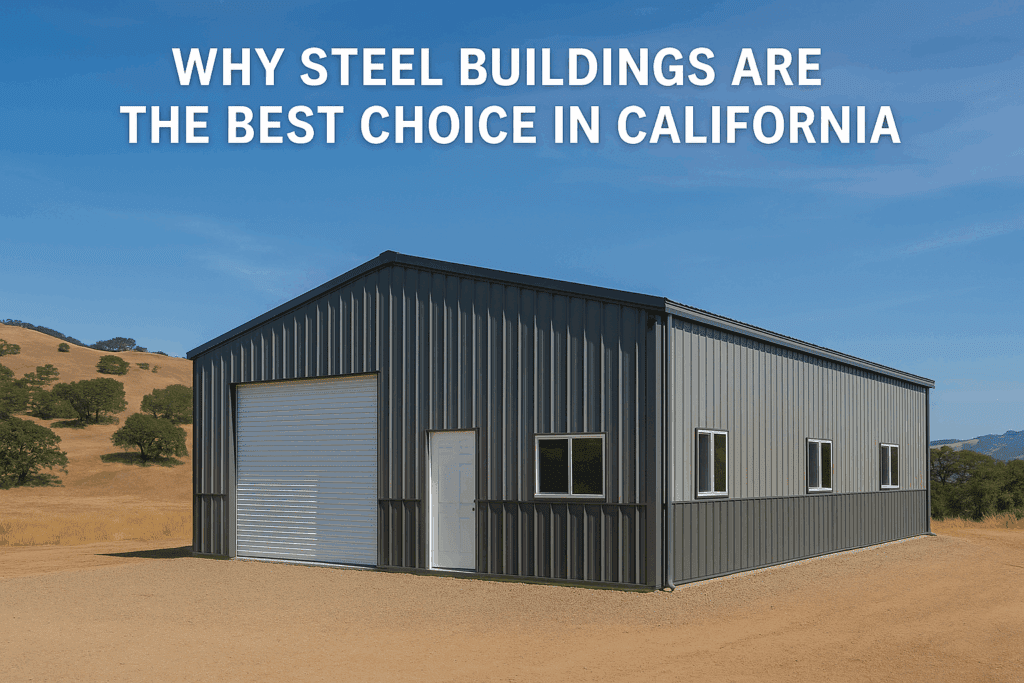California’s diverse environment—ranging from wildfire-prone hillsides to earthquake zones, and from scorching valleys to coastal breezes—presents unique challenges for construction. Steel buildings rise to meet these challenges, offering homeowners, business owners, and agricultural professionals a durable, efficient, and cost-effective solution. Here’s why steel structures are becoming the go-to option across the Golden State.
Fire Resistance
Wildfires have become an increasing concern throughout California. Unlike wood-framed structures, steel buildings are non-combustible, meaning they won’t catch fire or contribute fuel to a blaze. This provides critical peace of mind for property owners in high-risk zones. Insurance companies also recognize the fire resistance of steel, which can translate to reduced premiums and enhanced safety for stored equipment, vehicles, or personal belongings.
Earthquake Safety
California lies along major fault lines, making earthquake preparedness a necessity. Steel buildings are engineered to be both lightweight and highly flexible, which allows them to absorb and distribute seismic forces more effectively than traditional brick or concrete structures. This flexibility reduces the risk of catastrophic failure, protecting both the building and its contents during seismic activity.
Energy Efficiency
From the desert heat of the Inland Empire to the cool fog of the Bay Area, California’s energy demands vary dramatically. Steel buildings can be fitted with reflective roof panels that deflect sunlight and keep interiors cooler in the summer. When paired with proper insulation and ventilation, they maintain comfortable interior temperatures year-round—reducing reliance on HVAC systems and lowering energy bills. Many owners also integrate solar panels directly onto the steel roof, creating a sustainable energy solution aligned with California’s green initiatives.
Green Building Compliance
California leads the nation in green construction standards, including CALGreen—the first statewide mandatory green building code. Steel buildings naturally support these goals by incorporating recycled content, reducing construction waste, and offering long-lasting performance. Steel structures are also easier to disassemble and repurpose, contributing to a lower environmental footprint over their lifespan.
Cost and Time Savings
Labor and material costs in California are among the highest in the U.S. Steel building kits are prefabricated, meaning the parts are precision-cut and ready to assemble upon delivery. This significantly reduces on-site labor time, accelerates construction timelines, and cuts down on waste. Whether you’re building a commercial warehouse, a residential garage, or a farm storage unit, faster build times mean quicker use and lower overall costs.
Design Versatility
Steel buildings are no longer limited to industrial or utilitarian looks. Today’s steel structures can be fully customized to serve a wide variety of purposes and aesthetics. Whether you want a modern home office, a cozy she shed, a secure auto garage, or a spacious agricultural barn, steel framing supports wide, open interiors and flexible layouts. Cladding options, windows, color schemes, and finishes can be tailored to meet local style preferences and zoning requirements.
Conclusion
From fire resistance and earthquake safety to energy efficiency and customizable design, steel buildings are ideally suited to California’s varied landscape and evolving building standards. For anyone seeking a sustainable, durable, and affordable construction option in the Golden State, steel buildings continue to prove themselves as the best long-term investment.

